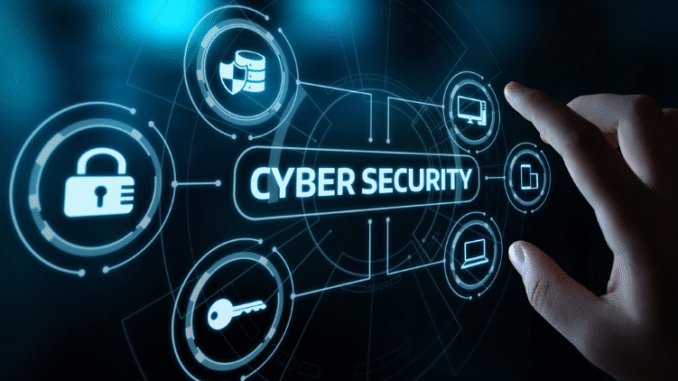
Cybersecurity Basics: How to Protect Your Data in a Digital World
In today’s digital age, our personal and professional lives are more connected than ever. From online shopping and banking to remote work and social networking, we generate and share vast amounts of sensitive data every day. While this convenience has its benefits, it also comes with significant risks. Cyberattacks, data breaches, and identity theft are growing threats that can affect anyone, regardless of age or profession.
Understanding the basics of cybersecurity is essential in protecting yourself and your information in a digital world. In this article, we’ll cover fundamental cybersecurity concepts and provide practical tips to help you stay safe online.
What Is Cybersecurity?
Cybersecurity refers to the practice of protecting systems, networks, and data from digital attacks. These attacks may come in various forms — viruses, ransomware, phishing emails, or unauthorized access — and can target individuals, businesses, or even governments.
Cybersecurity involves:
- Preventing unauthorized access to data
- Detecting and blocking malicious activity
- Responding to and recovering from cyber incidents
With threats constantly evolving, having a strong cybersecurity foundation is crucial in today’s technology-driven world.
Why Cybersecurity Matters
Cybersecurity isn’t just an issue for tech companies or IT professionals — it’s a personal matter that affects everyone who uses the internet. Here’s why it matters:
1. Data Privacy
Your personal data — such as emails, photos, passwords, banking information, and social media profiles — is valuable. Hackers may exploit it for identity theft or financial fraud.
2. Financial Protection
Cybercrime can lead to direct financial loss through scams, fraudulent transactions, or ransomware attacks demanding money to unlock your files.
3. Online Reputation
A compromised account can damage your online identity or credibility, especially if hackers send inappropriate messages or post harmful content on your behalf.
4. Business Security
For entrepreneurs and remote workers, protecting business data is critical. Cyberattacks can disrupt operations, result in loss of clients, and even lead to legal issues.
Common Cyber Threats You Should Know
To protect yourself effectively, you need to recognize common cyber threats:
● Phishing
Fraudulent emails or messages designed to trick you into revealing personal information or clicking on malicious links.
● Malware
Malicious software (viruses, worms, trojans) installed on your device to steal data, damage files, or spy on your activities.
● Ransomware
A type of malware that locks your files or systems and demands payment to restore access.
● Social Engineering
Manipulating people into giving up confidential information by pretending to be a trusted source.
● Data Breaches
When hackers gain unauthorized access to systems and leak or sell sensitive data.
Cybersecurity Best Practices: How to Protect Your Data
Now that you understand the threats, let’s look at the best cybersecurity practices to protect your data in the digital world.
1. Use Strong, Unique Passwords
Weak or reused passwords are one of the easiest ways for hackers to access your accounts.
Tips:
- Use a mix of uppercase and lowercase letters, numbers, and symbols.
- Avoid common passwords like “123456” or “password”.
- Use a different password for each account.
- Consider using a password manager to generate and store strong passwords securely.
2. Enable Two-Factor Authentication (2FA)
Two-factor authentication adds an extra layer of security by requiring you to enter a second code (usually sent to your phone or email) in addition to your password.
Benefits:
- Makes it much harder for hackers to access your account, even if they know your password.
- Many platforms (Google, Facebook, PayPal) offer 2FA for free.
3. Keep Software and Devices Updated
Hackers often exploit security flaws in outdated software.
Action Steps:
- Regularly update your operating system, apps, antivirus software, and browser.
- Enable automatic updates where possible.
- Replace unsupported or obsolete devices and systems.
4. Be Cautious with Links and Attachments
Phishing scams often hide in emails or text messages that appear to come from trusted sources.
What to Do:
- Never click on suspicious links or download unexpected attachments.
- Check email addresses and URLs for subtle misspellings.
- If unsure, contact the sender directly through a separate method (e.g., phone).
5. Secure Your Wi-Fi Network
Your home or office Wi-Fi is a gateway to your personal data.
Tips:
- Use a strong password for your Wi-Fi network.
- Change the default router settings and administrator login.
- Enable network encryption (WPA3 or WPA2).
- Disable remote management features you don’t need.
6. Use Antivirus and Firewall Protection
Antivirus software and firewalls serve as your first line of defense against malware and other threats.
Recommendations:
- Use trusted antivirus software and keep it updated.
- Enable built-in firewalls on your computer and router.
- Avoid downloading software from untrusted websites.
7. Backup Your Data Regularly
Data loss can happen due to cyberattacks, accidental deletion, or hardware failure.
Best Practices:
- Use cloud storage or external hard drives for backups.
- Schedule automatic backups at regular intervals.
- Make sure backups are stored securely and encrypted.
8. Limit Personal Information Online
Cybercriminals often gather information from social media and public databases.
What You Can Do:
- Avoid sharing personal data like your full birthdate, address, or phone number.
- Adjust privacy settings on your social media accounts.
- Be cautious about online quizzes or surveys that ask for sensitive details.
9. Use Secure Connections
Ensure the websites you visit are secure, especially when entering personal or payment information.
Tips:
- Look for “https://” in the web address and a padlock symbol.
- Avoid using public Wi-Fi for online banking or shopping.
- Consider using a VPN (Virtual Private Network) for secure browsing on public networks.
10. Educate Yourself and Stay Informed
Cybersecurity is an ongoing process. Threats evolve, and staying informed is your best defense.
Suggestions:
- Follow cybersecurity blogs, news sites, or YouTube channels.
- Take online courses or attend webinars.
- Teach your family members, especially children and the elderly, about online safety.
What to Do If You’re a Victim of a Cyberattack
If you suspect your data has been compromised, act quickly to minimize damage.
- Change passwords immediately for affected accounts.
- Enable 2FA if not already active.
- Notify your bank if financial data was exposed.
- Run a malware scan on your devices.
- Report the incident to local authorities or cybersecurity support organizations.
In serious cases, consider hiring a cybersecurity professional for guidance.
The Role of Cybersecurity in the Future
As technologies like AI, IoT, and cloud computing become more integrated into daily life, the importance of cybersecurity will only grow. Future cybersecurity trends include:
- Biometric authentication (fingerprint, face ID)
- AI-powered threat detection
- Decentralized data storage using blockchain
- Zero-trust security models
Proactive cybersecurity measures today can help you adapt to the digital challenges of tomorrow.
Conclusion
Living in a digital world brings countless conveniences, but it also exposes us to new vulnerabilities. By understanding cybersecurity basics and adopting smart practices, you can significantly reduce your risk of cyber threats and protect your personal and financial data.
Cybersecurity isn’t just for IT experts — it’s a responsibility we all share. Whether you’re working remotely, managing your finances online, or simply scrolling through social media, remember that your safety starts with you.
